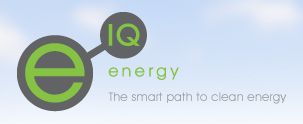Directory:EIQEnergy
eIQ Energy, Inc. uses unique power management technology to make solar energy and other clean energy sources more effective and affordable. The company's Parallux system, built around the vBoost converter module, reduces overall system costs and enables a true Parallel Solar architecture—benefiting system designers, installers and operators. eIQ Energy was founded in 2007 with the principal goal of improving the performance and the return on investment for clean energy sources such as photovoltaic systems. Headquartered in San Jose, Calif., eIQ Energy's executive team combines sophisticated knowledge of power supply design, semiconductors and energy management with broad entrepreneurial skills.
Why Parallel Solar?
Solar photovoltaic arrays have tremendous potential to alter the economics and environmental impact of electrical power generation. However, despite large innovation in the technology of photovoltaic modules, the system design has remained largely unchanged for over a decade.
Most solar arrays are composed of "strings" of matched panels, wired in series. This conventional approach is fundamentally vulnerable - when individual panels experience minor variations in output, they disrupt the output of the string and the entire array, cutting overall energy harvest by 5 to 30 percent.
eIQ Energy’s Parallel Solar architecture addresses this inherent vulnerability. With the addition of a simple VBoost converter module, each panel becomes a fully independent, highly efficient contributor of power to the array - just like a power plant on a grid.
Designers gain flexibility regarding PV panel location, orientation and overall system size. Installers have a safe, simple wiring scheme with easy expansion and per-panel monitoring. And most importantly, system operators improve their expected output and payback.
